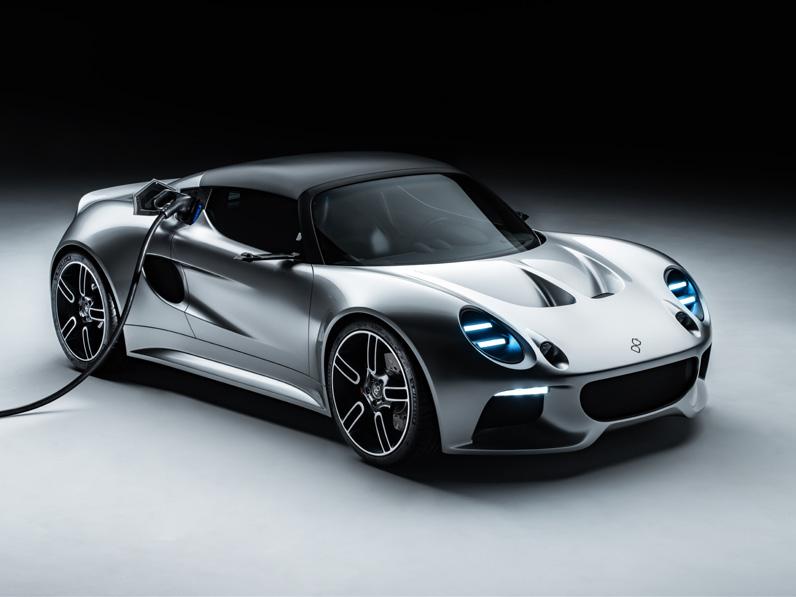
2 minute read
The future is now
WE TAKE A LOOK AT SOME OF THE LATEST TECHNOLOGICAL ADVANCES, THAT’S TURNING HEADS IN THE AUTOMOTIVE WORLD
Imagine driving though the sky in a flying car that is as much a part of daily life as today’s automobiles.
Advertisement
Suzuki Motor Corporation has signed a basic agreement with SkyDrive regarding cooperation for the manufacturing of ‘flying cars’. The SkyDrive Flying Car is a lightweight eVTOL aircraft that can land at airports located almost anywhere. At a customer’s request, an autonomous flying car will pick you up and fly you straight to your destination in comfort as you enjoy the ride.
Suzuki and SkyDrive have agreed to use a plant owned by the Suzuki Group in Japan, and aim to start the manufacturing of these vehicles around spring of 2024, with a scheduled release of 2025.
SIX-MINUTE CHARGE?
Nyobolt, the UK-based developer of ultra fastcharging batteries, has recently revealed a vehicle that can charge fully and repeatedly in less than six minutes — a new record in automotive electrification. Seen by some as EV’s ‘holy grail’, the Nyobolt EV weighs close to one tonne — as opposed to two of most current EVs. It uses a motorists to fuel their vintage vehicles with plantbased petrol, without any modifications to their engines, with three types of fuel initially available. Developed by fuel specialist Coryton, the fuel with the highest sustainable content promises a reduction of at least 65% in greenhouse gas emissions when compared to fossil fuels. The products use advanced second-generation biofuel manufactured from agricultural waste, such as straw, by-products or waste from crops which wouldn’t be used for consumption. By doing so, the fuel utilises the carbon that already exists in our atmosphere, which the plants absorb as they grow, recycling it, rather than releasing additional CO2 that is currently locked underground in fossil fuel. distinctive car configurations: one inspired by the 1967 classy Maserati Ghibli coupé, and another by the 1986 Maserati Quattroporte Royale.
Bentley Environmental Foundation

Bentley Motors recently announced the launch of the Bentley Environmental Foundation, an organisation seeking to support a wide range of initiatives that create next-generation solutions to environmental challenges. The initial launch partners include Project Drawdown, The Biomimicry Institute, and Sustainable Surf.
Drive It Like Beckham

For better or for worse, the world of celebrity owned and outrageously customised vehicles is nothing new (Justin Bieber’s gangster-like RollsRoyce Wraith anyone?)
35kWh battery and is capable of fully charging with up to 250km range in under six minutes with existing charging infrastructure. That’s the equivalent of charging at over 1600mph, more than double the fastest charging cars on the road today

TOMORROW’S CLASSICS
The first sustainable fuel specifically designed for classic vehicles has just been launched for public purchase in the UK.

However, Italian luxury vehicle manufacturer Maserati has taken this a little further in what could become the future of marque and pop icons collaborating with car brands. Maserati has launched the Fuoriserie Essentials collection: a series of cars “curated by select tastemakers and friends of the Trident”. The first collection has been designed by British footballer David Beckham who is passionate about classic cars and conceived this as an extension of his Savile Row sartorial wardrobe. His Fuoriserie DB Essentials collection includes two
Christoph Hohmann, head of global brand communications and responsible for the foundation, said: “We are very excited to launch the Foundation with these three partners. With Project Drawdown we aim to significantly increase the efficiency and effectiveness of billions of pounds worth of environmental donations and investments globally. With The Biomimicry Institute we’re supporting changemakers who are creating and scaling natureinspired solutions to address our most pressing environmental and social challenges. And with Sustainable Surf we’re helping to strengthen blue carbon ecosystems in Africa and Europe through the massive forestation of seagrass and mangrove trees.”










